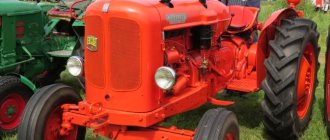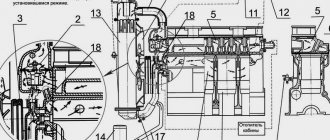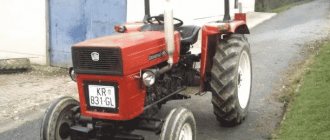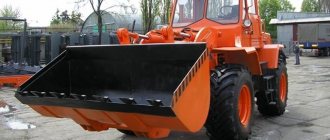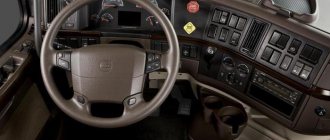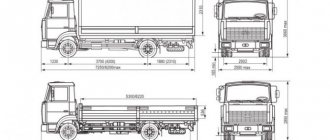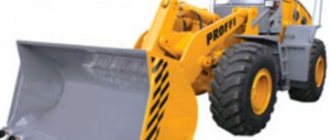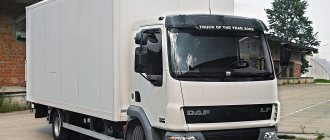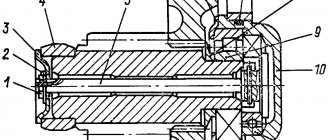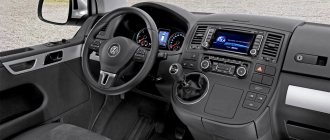General information
MAZ 4370 is a popular low-bed medium-duty truck belonging to the MCV category (manufacturer: Minsk Automobile Plant, Belarus).
The history of the Minsk Automobile Plant is divided into 2 periods: before and after the collapse of the USSR. If in the Soviet era the enterprise had large production volumes and broad financial opportunities, then everything changed. Cash flows were cut, and the plant faced serious technical and financial difficulties. During this period, it was necessary to radically change the product line to meet new market needs.
In 1997, the Minsk Automobile Plant began to cooperate with MAN, which seriously influenced the further development of the enterprise. At that time, the Gorky Automobile Plant, together with the Minsk Automobile Plant, began creating a low-frame, medium-duty vehicle designed for roads of improved categories. However, subsequently the Minsk Automobile Plant refused to supply cabs for GAZ products and began developing its own truck. At that time, cooperation with a German company was vital for the company, as it allowed it to borrow foreign solutions for the production of its own cars.
The basis for the creation of the MAZ 4370 was the 6-ton MAN L 2000 truck, introduced in 1994. The Minsk Automobile Plant showed the first samples of the new model in 1999. They used a foreign-made chassis and operator's cabin. A distinctive feature of the car was its low frame. The appearance of a truck unique to the Russian and Belarusian markets did not go unnoticed. The spacious operator's cabin and high technical characteristics allowed the vehicle to remain among the leaders in its class for a long time. The success of the MAZ 4370 was due to the urgent need for vehicles for a variety of small-scale transportation over various distances. The low loading height was convenient to use and made the process easier.
The truck entered the Russian market only in 2003 and was offered in 2 versions:
- MAZ 437040 – a standard truck with the ability to travel as part of a road train;
- MAZ 437041 – version with towing block for use with trailers.
At that moment, the 3-ton ZIL “Bychok” and the 1.5-ton GAZelle had already appeared on the domestic market. However, even with competitors, the MAZ 4370 was in great demand. Neither the GAZ-3310 (Valdai) nor the ZIL-5301 could compare with the Minsk car in terms of technical characteristics, comfort and build quality. A worthy competitor to the MAZ 4370 appeared only 10 years later, when the KamAZ 4308 entered the market.
MAZ 4370 was produced in the following modifications:
- MAZ 43704 – model with MMZ D-245.30 E2 engine of Euro-2 environmental class;
- MAZ 437040 – version with MMZ D-245.9-540 engine of Euro-1 environmental class;
- MAZ 437043 - a model with an improved MMZ D-245.30 E3 unit of Euro-3 environmental class;
- MAZ 4370430 is the most powerful variation with a German DEUTZ engine of Euro-3 environmental class. The engine worked in conjunction with a 5-speed ZF S5-42 gearbox.
The main purpose of the MAZ 4370 vehicle is to transport various types of cargo on urban and intraregional routes. This model can be used as part of a road train. The car has become widespread as a tow truck. A variety of equipment is mounted on the MAZ 4370 chassis (manipulators, lifting devices, dump body, tank, etc.), which allows it to be used in a variety of areas of production and construction. Some versions are equipped with improved operator cabins with a berth, allowing the vehicle to be used for long-distance transportation.
The Importance of Tracking
Monitoring tire pressure is necessary, since this indicator is strictly linked to many parameters of the efficient and safe operation of a car whose wheels:
It is important not only to take care of the wheels, but it is equally important to take care of the paintwork of your car. Truck painting in Moscow will allow you to solve a wide range of problems in painting both truck cabins and frames and individual parts of trucks. The technical condition of the car ensures safe driving on the highway. Any emergency condition of a car on the road can lead to serious consequences.
To avoid problems while driving on the highway, you need to maintain this criterion at the level recommended by the manufacturer.
The air density parameter in the wheels for each type of vehicle is set individually by the automobile manufacturer.
Watch the video to see how to select the correct tire pressure. The driver needs to know the current condition of the tires. In cold weather, tire pressure is measured at shorter intervals than in summer.
It is recommended to check this indicator once or twice a week, using devices designed for this purpose. A pressure gauge is a basic acceptable and effective design for monitoring pressure.
Specifications
Dimensions:
- length – 7000 mm;
- width – 2450 mm;
- height – 2700 mm;
- wheelbase – 3700 mm.
Compact dimensions allow the car to move freely in urban environments without interfering with the passage of other vehicles. The turning radius of the machine is only 7800 mm.
Other characteristics:
- number of places – 3;
- curb weight – 4000 kg;
- total weight – 10100 kg;
- load capacity – 6000 kg;
- body capacity - 35.5 cubic meters;
- maximum speed – 100 km/h.
Average fuel consumption is 23 l/100 km in winter and 18 l/100 km in summer. Fuel tank capacity – 130 l.
Hurricane workers
The modification appeared in 1977. It was used as a fire engine for work at airfields. This model used a tail-mounted self-contained motor to operate the pump. It was borrowed from the ZIL 375. It ran on gasoline and had eight cylinders. When powder began to be used to extinguish fire, model AA 70 7310 220 appeared. It had another tank for storing 2 tons of powder.
Many Hurricane MAZ 543 fire trucks, the photo of which is presented below, still perform their functions at airfields in the countries of the former USSR.
The vehicle is designed for a crew of 4 people. The water tank capacity is 12000 l. The foam tank has a capacity of 900 liters. Water is supplied to a distance of 70 m, and foam - 40 m. The amount is 98 liters per 100 km.
Engine
The Minsk Automobile Plant regularly modernized the MAZ 4370 engines, which is why in various periods the car was equipped with different power plants. Among them:
- MMZ D-245-540 (Euro-1) with a mechanical 5-speed gearbox ZIL-659D;
- MMZ D-245 E2 (Euro-2) with manual gearbox SAAZ-3206;
- MMZ D-245 E3 (Euro-3) with manual gearbox SAAZ-3206;
- DEUTZ BF 4M 1013FC (Euro-3) with manual gearbox ZF S5-42.
After the tightening of environmental standards for engines, the installation of engines of Euro-1 and Euro-2 standards stopped. Now the Minsk Automobile Plant exclusively uses units that comply with the Euro-3 class.
The MMZ D-245.30 E3 motor is the own development of Belarusian engineers. This 4-cylinder V-shaped engine has an updated gas exchange system and is distinguished by significant quality and simplicity of design. The working cylinders are arranged vertically in one row.
Characteristics of the MMZ D-245.30 E3 motor:
- working volume – 4.75 l;
- rated power - 157 hp;
- maximum torque – 580 Nm;
- weight – 450 kg.
The foreign DEUTZ BF 4M1013FC engine is less widespread. This unit has a number of additional options that make its operation more uniform and quiet. It has more power compared to the Belarusian engine.
Characteristics of the DEUTZ BF 4M1013FC unit:
- working volume – 4.8 l;
- rated power - 170 hp;
- weight – 560 kg.
MAZ-500, MAZ-54323 and MAZ-54331: Low air pressure in the brake system
Just a case from practice.. And the experience was already more than one year, but it still happened. And it all started routinely: issuing documents, a small queue for loading, a distance of 150 km.
I drove halfway down the road and ended up in a small traffic jam, not even a traffic jam. And here I began to notice that the air pressure barely exceeded 6 atm, but I chalked it up to frequent braking—I drove on. And as it should be in this case, the gear is lower and the revs are higher.
After driving 5 kilometers like this, I realized that the pressure was not rising, but was slowly decreasing. It popped into my head, apparently the compressor belt was either loose or burst. I stop, raise the cab, climb onto the engine, check the tension of the compressor belt, but it is intact. Strange, what could it be? Most likely there is a leak, you need to try to pump up the air.
To do this, I install two anti-roll bars, remove the handbrake, add speed and wait. There is no progress. I take the handbrake off and wait again - the result is zero. I turn off the engine and quickly inspect the whole car, I can’t hear any hissing at all. There is air in the receivers, including the semi-trailer. I start it again, pump the air, wait for the result, but there is none, I can’t even pump it up to 6 atm and that’s it.
I examined all the taps, relay valves, energy accumulators - there is not even a suspicion of an air leak anywhere. How the hell can you not remember what the reason is, is it really the compressor? I remove the discharge hose from the compressor, nothing like that - it pumps. The compressor is not new, but it works, but where the air goes is completely unclear.
When the reason is unclear, you begin to invent and speculate. Maybe the discharge valves on the compressor have been removed? I took the key, unscrewed the valve plugs on the compressor, pulled out the springs, and then the valves. There is a clearly defined shiny chamfer on the exhaust valves and the same on the head. The valves are in place, the springs are stretched a little and also put in place.
I start it, but the result is the same. I’m starting to realize that I most likely won’t have time to unload. Traffic on Gorkovka is dense and even if you turn off the energy accumulators, then in the remaining 20 km, most likely with such pressure, you will only arrive at your accident. We need to look for the reason.
I disconnect the semi-trailer from the tractor, but I can’t even pump up the pressure to 4 points. But luckily for me, a friend of mine was driving by. I drove by, stopped, the two of us listened and heard nothing. At this point I ask him, let’s connect two hoses together, I’ll start the car with you and pump up the system.
First in the car, and if he gets pumped up, then the semi-trailer. Then I will drive these 20 km without a clutch and will not brake if possible, and during unloading I will have time to find the reason. And so they did.
Surprisingly, the car also pumped up, and then the semi-trailer. My friend and I came to the conclusion that the system had nothing to do with it, it was sealed and the compressor needed to be changed. With such introductions, I drove on, the pressure was slowly dropping, but I managed to get to the place.
The unloading was automatically postponed until tomorrow and I didn’t waste time. There were no shops nearby, but there was a garage. There was a compressor from ZIL in the garage and they gave it to me for a purely symbolic price, but they advised me to disassemble it and carry out an inspection, which I did.
The compressor turned out to be decent, even the rings on it were recently replaced. The compressor was rebuilt and replaced. I start it, pump air, and the result is even worse. What could it be? The more I search for the problem, the worse the result. At least put your compressor back. But luckily it was already late and it was getting dark; this dirty business had to be finished.
In the morning, with renewed vigor, I began to search for the cause of the malfunction. I unscrewed the tubes from the wet receiver and from the double-circuit disconnect valve, air flows everywhere, but the pressure does not increase.
In short, I spent a considerable amount of time climbing around the car. I have disconnected the discharge tube from the compressor more than once and could not find the reason. The tube from the compressor was already heated up, but there was still no pressure.
I rested and had breakfast, after which for some reason I removed the tube with the hose that goes from the compressor to the elbow on the frame. I examined the hose - it was normal without any peeling, ruptures, and so on.
Then, I tried to blow into it and was surprised, because... the hose was not blown out. I unscrewed the hose and it blew normally, but the iron tube did not.
It turned out that the oil was baked into the tube to such an extent that it could barely be blown through by the compressor. Cleaning it with wire also failed. I put it on a gas stove and this sintered oil mass burned out.
After this operation, I quickly put everything back in place, started the engine and the needles almost immediately crawled up and took their usual working position. This is how it happens, how much work there is because of some little thing.
Now, if for some reason I touch the compressor, I always look into this tube. The problem may occur on MAZ-500, MAZ-54323 and MAZ-54331 trucks.
Device
MAZ 4370 received a front dependent leaf spring suspension with hydraulic shock absorbers (telescopic type) with a stabilizer. An I-beam was used as the front axle. The rear suspension was built on longitudinal semi-elliptic springs. This design has proven itself well and is characterized by increased stability. The MAZ 4370 had a front-wheel drive, rear-engine layout with a 4 by 2 wheel arrangement. For the first models, foreign chassis produced at the MAN plant were used. Later, the Minsk Automobile Plant began producing its own chassis. The MAZ 4370 was equipped with a low-frame body, which was its main advantage. This arrangement made it possible to transport large cargo at great heights without obtaining additional permits. The car's suspension turned out to be slightly harsh due to the use of standard springs, which are stacked sheets of metal. Its main advantage was the simplicity of the device. The service life of the springs reached 100-200 thousand km. At the same time, the rigidity decreased noticeably with a decrease in tire pressure or after loading the vehicle.
The car was equipped with 2 types of transmissions:
- 5-speed manual transmission SAAZ-3206 (manufacturer – Russia, Saransk Aggregate Plant). This gearbox is characterized by small gear ratios and high rigidity.
- 5-speed manual gearbox ZF S5-42 (assembled in Spain or China). Gear shifting is performed without sharp clicks and more smoothly.
Torque was transmitted to the transmission elements from the engine via a single-plate dry friction clutch. An interwheel differential with locking was provided for the rear axle.
The design of the MAZ 4370 used a drum-type brake system, which included 2 main elements - a drum and brake pads (some versions received front disc brakes). This mechanism was both simple and reliable. The braking system was driven by a pneumohydraulic system, the action was carried out on all wheels. The car again had a parking brake driven by energy accumulators. The car was equipped with 17.5-inch tires (235/75R) with a specialized tread. Initially, the model was equipped with Continental tires, since tires of the required size were not produced in the CIS countries. Later, the Minsk Automobile Plant began to cooperate with the Yaroslavl plant, which began supplying the partner with Y478 tires. They were installed in the stock version.
MAZ 4370 received a modern power supply system with a voltage of 24 V. The power sources were 2 6-ST-110 batteries and a generator 3232.3771.10. The engine was started with an ST-230R starter.
The car was equipped with a 2- or 3-seater operator's cabin, which could be equipped with a sleeping place, allowing the driver to rest if necessary. This place was folding and, if necessary, was retracted into the back wall. An electronically controlled heater was again installed in the operator’s cabin, which ensured optimal temperature conditions in winter. The doors had special handrails that made it easy to climb inside. The operator's cabin itself could hardly be called modern, but in terms of convenience it was considered one of the best.
An awning or other equipment was installed on the MAZ 4370 frame. The truck is currently offered in the following versions:
- truck crane;
- manipulator;
- concrete mixer;
- closed body;
- refrigerator.
Cabin MAZ-4370 “Zubrenok”
The truck received a spacious all-metal cabin. To gain access to the engine compartment, you should tilt it forward using a hydraulic lift.
The cabin exists in 2 versions: with 3 seats or with two chairs and a convertible sleeping bag in the rear. The huge cabin and its flat floor will comfortably accommodate people of any size.
The driver's seat is equipped with air suspension and is adjustable. To keep you warm during the cold season, the cabin is equipped with an electronically controlled heater.
The low-frame body of the Zubrenok facilitates the transportation of high loads; it is also possible to install an awning. The design of the vehicle makes it possible to mount various devices (cranes, towers, tow trucks, tank trucks, etc.).
Description and scope of application
Unlike its long-range counterparts, for example, the ZIL-4520, the more compact and maneuverable MAZ-5551 easily moves in urban environments. Most often he can be found working at a city construction site. The main purpose of this truck is to transport bulk materials, and on a short shoulder, which is determined by its 4x2 drive.
Watch the video:
- Agriculture
- industry
- urban management and road construction
Body characteristics
In the standard version, the MAZ-5551 is equipped with a one-piece body with rear unloading. Folding the tailgate and tipping the body are remote controlled and occur automatically.
The cabin has two seats, as can be seen in the photo; between the passenger and driver seats there is space for storing things and documents. The driver's seat is equipped with springs and moves forward and backward, but the steering column can be adjusted in two directions.
The comfort in the standard cabin ends with this and the electrically heated side mirrors; there is not even shock absorption in the places where it is attached.
To access the power units, the cabin tilts forward using a hydraulic drive. Raising the cabin is possible only with the radiator grille open, and the mechanism for actuating the mechanism is located behind the grille itself. Fixation in the lowered form is carried out using a conventional steel cable.
The bottom of the truck is heated by supplying exhaust gases. This design greatly facilitates the use of the dump truck in the cold season. For extreme conditions and temperatures down to -60°C, the MAZ-5551 01 HL model was developed.
The transmission of the basic version is a 5-speed manual gearbox YaMZ-236P; on later models with a load capacity of up to 10 tons, the YaMZ-2361 was installed. Nowadays, Western-made boxes are found on new cars.
There is a stabilizer bar at the rear, which significantly reduces the truck's roll when cornering. Front and rear brakes are pneumatically controlled drum brakes.
Often when passing a technical inspection, the question arises where the chassis number is located. The number on the MAZ-5551 frame is located in a place traditional for Soviet trucks - on the right rear, on the front of the frame (usually in the area of the rear axle or with a slight offset).
Correct tire pressure for truck
There is a concept of “correct pressure” for truck-type wheeled vehicles. It is divided into 3 main types:
- Maximum pressure. As a rule, this value is equal to that specified by the tire manufacturer itself. It is usually indicated on the side of the tire. But it is not recommended to constantly inflate the wheels to the specified limit or higher, as this affects wear resistance and increases the risk of creating an emergency situation on the road.
- Optimal pressure. Typically, truck owners focus on this type of “correct pressure”. The optimal pressure value is usually indicated in the form of a table on which the number of atmospheres corresponding to the mass of the transported cargo is recorded. This option is considered the best, but in practice it is quite difficult to stick to it, since the wheels will have to be inflated very often. Each car brand has its own standards, but they usually do not take into account the characteristics of different types of tires.
- Recommended pressure. The truck manufacturer indicates this value for each wheel. By default, the indicated pressure is calculated at the maximum load on a specific machine axle. If the load is significantly lower than the maximum permissible, you need to inflate the wheel below the recommended level.
What performance characteristics are affected by changes in tire pressure?
MTZ wheel pressure directly affects the performance characteristics of Belarus. Why is this question relevant for every tractor driver, since you can find out the optimal pressure readings in the operating manual and always set them? The fact is that MTZ tractors are universal. This means that the machines are suitable for a wide range of jobs depending on the attachments installed.
Tractors are equipped with attachments for plowing, sowing, harvesting and applying manure, digging, and snow removal. For popular models, you can find on sale more than 100 different attachment options. And that means it is simply impossible to answer unequivocally what pressure should be in the tires of the front and rear wheels of MTZ. For each task, taking into account the season and installed equipment, you will have to select your own pressure.
The pressure in the wheels of the MTZ tractor affects:
- Fuel consumption.
If the pressure in the tires of the Belorus tractor decreases, the contact area with the ground increases. And this, in turn, leads to an increase in fuel consumption: more power is spent on overcoming the increased friction force at the point of contact.
- Tire wear.
The pressure in the front and rear wheels of MTZ directly affects the wear rate of tires. In general, tractor tires are consumables: Belshina and Voltair, which are not the most reliable, have to be changed almost every year. But even on reliable Kama, incorrectly set pressure will not have the best effect.
In the case of low pressure, the contact area of the wheels with the road surface increases, resulting in increased friction and internal stress of the tire frame. Over time, this will lead to cracks and blowouts, as well as increased wear on the edge of the tread.
In the case of high pressure in the wheels, the frame is under tension all the time, and the risk of cord rupture is high. Due to a decrease in the contact area, the load on the tread increases, and its pattern wears out faster. Also, tractor tires can be punctured if they are overinflated, which is especially important for tractors working on virgin soil.
- Wear of chassis elements.
By selecting the correct pressure of the MTZ wheels, you can extend the life of the chassis, which is the weak point of any tractor. The higher the wheel pressure, the worse they dampen vibrations and vibrations when driving over uneven surfaces. This means that the entire load goes directly to the chassis and suspension.
When the tires are overinflated, the tractor begins to “bounce” like a ball. This operating mode is dangerous for Belarusians; in this case, the tire pressure must be reduced. Lower pressure allows tires to better dampen vibrations. In this regard, when working in very difficult conditions, some tractor drivers reduce the pressure. But it is not recommended to operate the tractor in this mode for a long time.

